Innovative wastewater measurements improve sludge dewatering
Valmet’s automation and modern wastewater treatment solutions enable Oulun Vesi to stabilize sludge, treat it more efficiently and meet environmental criteria long into the future.
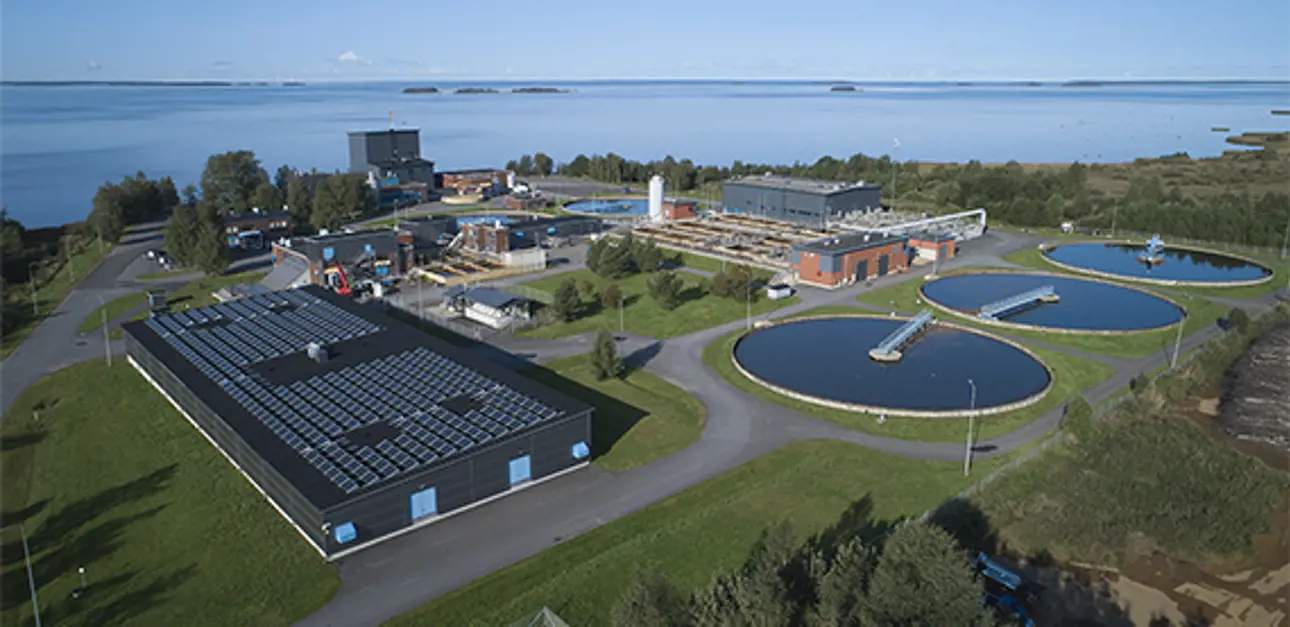
Oulu, Northern Finland’s largest and oldest city, is located on the shores of the Gulf of Bothnia at the mouth of the Oulujoki River. Today, the region is home to more than 200,000 people and a popular destination for thousands of domestic and international leisure and business travelers.
Oulun Vesi, a local utility company, provides high-quality and reliable water services to the region and runs two wastewater treatment facilities. Most of the wastewater is treated in the Taskila treatment plant, which is the biggest wastewater treatment plant in Northern Finland.
A few years ago, Taskila’s existing sludge treatment facility reached the end of its lifetime after 20 years in operation. A new system with modern solutions was needed to ensure the trouble-free and efficient treatment of sewage sludge well into the future.
“We decided to build a completely new sludge dewatering system, as rebuilding the old one was no longer reasonable. The new facility with two centrifuges and two screw press units, each with four drying screws, was commissioned in the summer of 2021. We have been testing the new equipment since the spring, and everything seems to be working very well,” says Jarmo Lahtinen, Operations Manager, Oulun Vesi.
Good experience with Valmet since the early 1990s
Cooperation between Oulun Vesi and Valmet dates back to the early 1990s when Valmet delivered an automation system to the plant and also took the first steps in developing measurements for wastewater treatment. In fact, cooperation with Oulun Vesi played a major role in laying the foundation for today’s successful product line. Since the early 2000s, the Taskila plant has been equipped with Valmet DNA Automation System.
“At Taskila, we have run our operations with Valmet’s automation systems and measurements for a long time, and we have good experience with them. That’s why it was a natural and easy choice to continue using Valmet’s technology in the new dewatering facility, too,” Lahtinen points out.
In 2020–21, Valmet extended the existing Valmet DNA Automation and Information Management System by updating a redundant process station and supplying new I/Os. The plant has a service agreement with Valmet for the automation system.
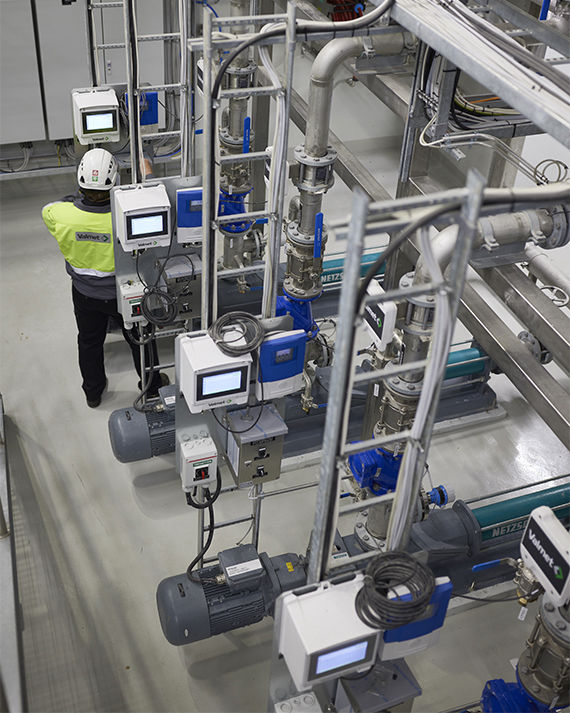
Four Valmet Total Solids Measurements (Valmet TS) make it possible to control and optimize the incoming sludge flow and consequently the overall solids treatment process.
Measurements provide reliable online data
Additionally, the delivery included advanced solids measurements for the new dewatering unit. The new sludge dewatering facility was equipped with four Valmet Total Solids Measurements (Valmet TS), one for each of the feeder lines. The measurements make it possible to control and optimize the incoming sludge flow and consequently the overall solids treatment process. Based on microwave technology, Valmet TS gives operators accurate and real-time information 24/7 on the total solids. The major benefit can be seen on the bottom line – savings in polymer dosing, energy and transportation costs.
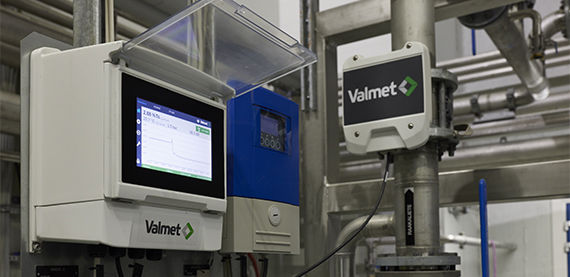
Valmet TS gives operators accurate and real-time information 24/7 on the total solids.
To optimize polymer dosage, minimize the solids content in the centrate and consequently provide significant cost savings, the plant now has two Valmet Low Solids Measurements (Valmet LS). This measurement is the first and only one that can measure centrate suspended solids reliably.
For dry cake measurement, Valmet delivered four Valmet Dry Solids Measurements (Valmet DS). They extract a continuous sample from the falling cake flow after the centrifuges and screw presses and measure the solids content before returning the sample to the process. Accurate measurement of biosolids provides significant savings in polymer dosage, energy and dewatered solids transportation.
“These measurements show us the status in sludge dewatering in real time and enable us to adjust the process accordingly to get the desired dry solids content and centrate concentration,” Lahtinen points out.
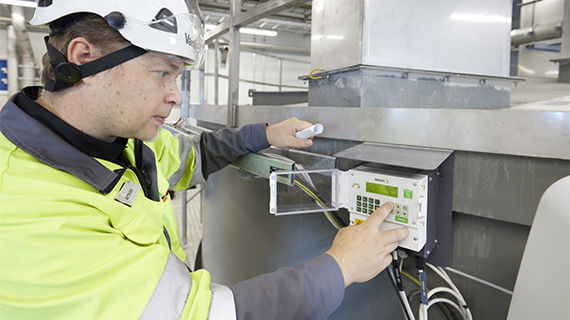
The plant has two Valmet Low Solids Measurements (Valmet LS) to optimize polymer dosage, minimize the solids content in the centrate and consequently provide significant cost savings. Pictured Valmet’s Product Manager Jarmo Havana.
Possible to fully optimize sludge dewatering later on
Based on the experience gained since start-up, Oulun Vesi is happy with the automation extension, measurements and overall project.
“Startup and cooperation with Valmet during commissioning went very well. We now have a remote connection through which Valmet’s experts can access our systems in Taskila. All in all, our cooperation works well,” Lahtinen continues. “At this point, our plan is to use the measurements to optimize the sludge dewatering process so that we get the desired dewatering results. Additionally, the centrate solids returning to the process have been minimized.”
Having all the essential Valmet measurements for sludge dewatering makes it possible for the plant to have a Valmet Sludge Dewatering Optimizer (Valmet SDO) installed later into the process to gain further benefits.
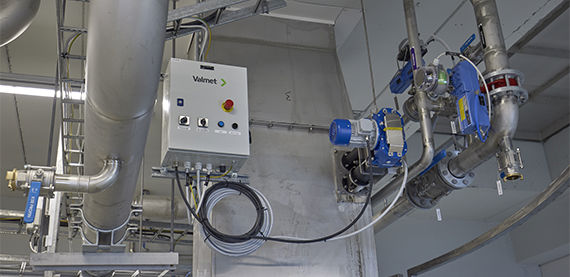
Valmet Dry Solids Measurement (Valmet DS) extracts a continuous sample from the falling cake flow after the centrifuges and screw presses and measures the solids content before returning the sample to the process.
Related articles




